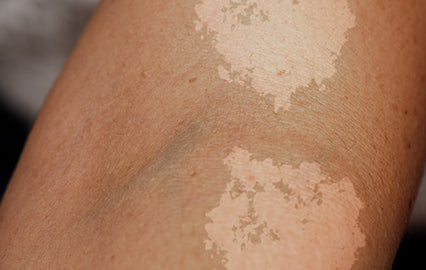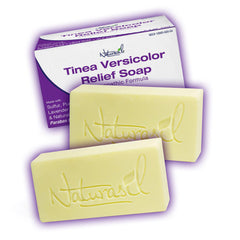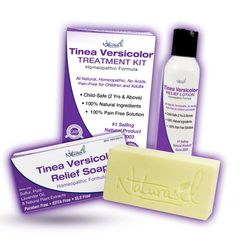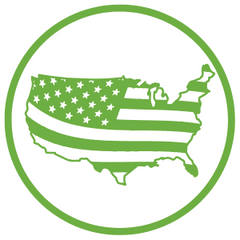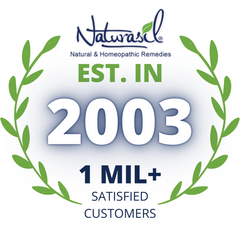What is Tinea Versicolor? An Investigative Look into This Common Fungal Infection
The concept of yeast growing and thriving on your skin is not an appetizing topic. While many conversations regarding bodily yeast refer to infections in the genitals or on the tongue, yeast colonies can proliferate in practically any area of your body. One of the most common types of yeast infections is also one of the most under-discussed. Tinea Versicolor is a unique yet common fungal infection in which normal skin flora begins to overdevelop into a potentially serious problem. While you, or someone you know, may have Tinea Versicolor, few truly understand this specialized yeast infections source, symptoms, and treatment options. As with many areas of human health, the more you know about Tinea Versicolor, the greater your ability to win this biological battle. The plus of Tinea is that it's not contagious.
From Natural Skin Flora to Unnatural Yeast Proliferation: The Underlying Causes of Tinea Versicolor
Did you know yeast is present throughout your entire body? Several variations of bodily yeast are found throughout your skin and intestines. While the presence of yeast is considered part of the average human cutaneous flora, its concentration and ability to alter the physical health and appearance of the skin are generally maintained through natural skin barriers and a delicate balance maintained by diet and biological factors. However, a widespread infection can occur when hormonal changes, environmental factors, or immune system alterations disturb this balancing act.
Per The Merck Manuals, a dimorphic fungus known as Malassezia furfur is believed to be responsible for Tinea Versicolor outbreaks. This natural component of skin flora is present along the skin surface in most individuals; however, much like any other yeast infection, an infection begins to cultivate when the delicate balance within the flora becomes disturbed. Unlike other yeast infections, Tinea Versicolor can afflict nearly any portion of your body.
The primary causes of Tinea Versicolor are not necessarily related to underlying health issues. The American Academy of Dermatology states that even relatively healthy people can suffer an overgrowth of Malassezia furfur. Although most people risk developing this chronic skin infection, research has found several factors predisposing individuals to Tinea Versicolor.
These include:
Environmental Causes: People in hot, humid climates are statistically, up to 40%, more likely to develop mild to severe Tinea Versicolor. This skin condition is prevalent in tropical locations where air moisture remains relatively high throughout the year.
ImmunoSuppression Patients: Those with a compromised immune system due to disease, medication, or physical conditions, such as pregnancy, are likely to experience some level of yeast outbreak.
Tinea Versicolor: Common Signs and Symptoms
Unlike other forms of yeast infections, such as Candida, Tinea versicolor symptoms are not painful and, for many, go unnoticed until the flora colony has progressed over a large portion of the body. In most minor cases, Tinea results in slight discoloration of the skin. However, in moderate to severe infections, the overgrowth of Malassezia furfur results in scaly patches. These patches are easily identifiable as they feature a unique coloration, typically ranging from white to tan—even from pink to brown.
The discoloration is caused by azelaic acid, which has bleaching qualities. The hypo-pigmentation commonly associated with this condition results from lower tyrosinase production. In the most fundamental sense, tyrosinase is a copper enzyme responsible for manufacturing melanin, which provides "color" to the skin. Therefore, by inhibiting this enzyme, affected areas feature a lighter hue than the surrounding skin.
Treating Tinea Versicolor: Common and Effective Treatment Options
The most common treatment for tinea versicolor includes topical antifungal ointments. While topical creams are typically prescribed for severe infections, oral medications, such as Fluconazole or Ketoconazole, are recommended. Although many physicians recommend prescription medications for treatment, natural treatments are surprisingly effective in restoring balance.
Some of the most recommended natural treatment options include colloidal silver soap, sulfur lavender soap, and various herbal extracts known for their antifungal and antibacterial properties, such as the formulation found in the Naturasil Tinea Versicolor Treatments.
While it's possible to treat this fungal infection through natural or chemical ointments, the physical evidence of this condition can remain for months or years after the yeast proliferation is under control. Another aspect of treatment you must be aware of is the likelihood of a recurrence. Per the Merck Manuals, re-occurrence is almost guaranteed. However, you may reduce the possibility by washing with antifungal soap, such as zinc pyrithione, and applying an anti-fungal ointment at least once a month.


